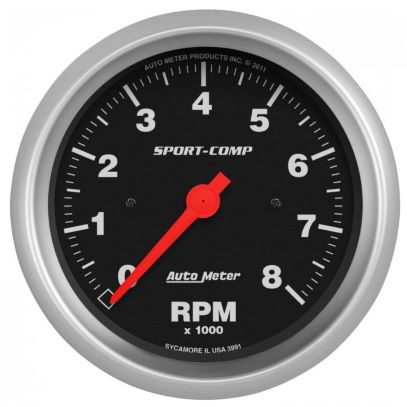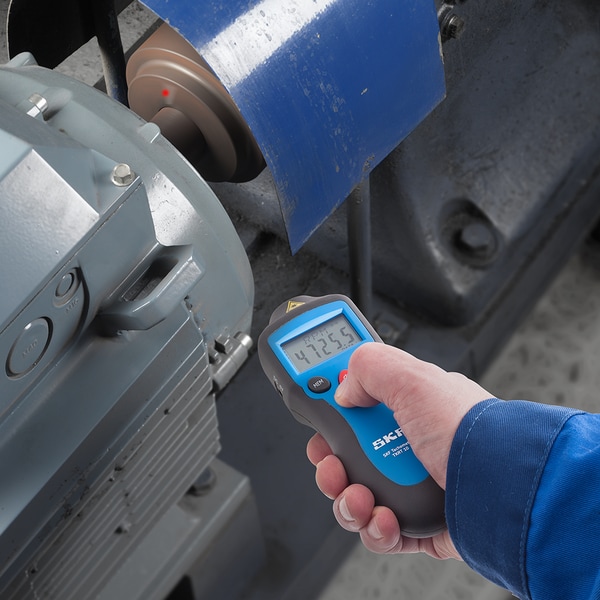Comprehensive Guide to Comprehending and Utilizing a Tachometer Successfully
Comprehensive Guide to Comprehending and Utilizing a Tachometer Successfully
Blog Article
The Relevance of a Tachometer in Monitoring Engine Rate and Efficiency in Automotive Applications
In the realm of automotive engineering, the tachometer stands as an essential tool in the motorist's collection, providing a direct window into the inner workings of a car's engine. Beyond its feature as a plain scale of changes per min (RPM), the tachometer offers as a crucial device for enthusiasts and professionals alike, offering real-time insights right into engine efficiency and wellness.
Relevance of Checking Engine RPM
Monitoring engine RPM, or revolutions per min, is an essential facet of auto upkeep and performance assessment. Engine RPM directly correlates with the rate at which the engine's crankshaft revolves, suggesting exactly how quickly the engine is running - tachometer. By monitoring RPM, mechanics can analyze the wellness of the engine, find prospective issues, and fine-tune efficiency. An uncommon RPM analysis may signify troubles such as engine misfires, defective ignition system, or concerns with the gas shipment system. Consistently high RPM analyses might indicate hostile driving practices or the need for a greater gear change to enhance gas effectiveness.
Moreover, monitoring engine RPM is necessary for performance analysis in racing and high-performance lorries. Maintaining optimum RPM levels is vital for achieving peak power outcome and velocity. Racers typically utilize tachometers to guarantee they are operating within the suitable RPM range for maximum efficiency. In summary, keeping an eye on engine RPM is not just important for identifying issues however additionally for optimizing engine efficiency in numerous automotive applications.

Advantages of Real-Time Information
In automobile applications, real-time data plays an important duty in providing instantaneous insights into the efficiency and problem of the lorry. By continually keeping track of various specifications such as engine rate, temperature level, gas intake, and more, real-time information offers various benefits that add to improved efficiency and safety on the roadway.
Furthermore, real-time data assists in performance optimization by giving instant feedback on driving routines and engine efficiency. Vehicle drivers can adjust their actions in real-time based on this info to attain much better fuel economic climate and prolong the life-span of their automobile.

In addition, real-time data plays a vital function in modern-day automobile diagnostics, making it possible for service technicians to quickly identify and deal with breakdowns. This causes reduced downtime, lower upkeep costs, and eventually, enhanced overall automobile reliability and durability (tachometer). By utilizing the power of real-time information, vehicle stakeholders moved here can make informed choices that favorably affect both the performance and long life of the automobile
Effect On Gear Shifts
Effective equipment changes in automobile applications significantly influence general performance and driving experience. The tachometer plays a critical function in enhancing equipment changes by offering real-time engine speed data to the motorist. When approaching the redline on the tachometer, it signifies the motorist to upshift to stop over-revving the engine and triggering prospective damage. On the various other hand, downshifting at the appropriate minute can help keep the engine in its power band, making sure receptive velocity when required.
Moreover, the tachometer help in achieving smoother equipment transitions, specifically in hands-on transmissions. By checking engine rate, drivers can carry out equipment changes at the ideal RPM range, decreasing jerking movements and decreasing wear on the transmission components. This precision in equipment adjustments not only enhances driving convenience but additionally adds to sustain efficiency.
Enhancing Fuel Performance
Given the vital function the tachometer plays in optimizing equipment changes for efficiency and engine wellness, it straight adds to making the most of fuel effectiveness in auto applications. By supplying real-time comments on engine rate, the tachometer helps chauffeurs in preserving the most efficient RPM range for fuel economy. When chauffeurs constantly keep track of the tachometer and readjust their motoring habits as necessary, they can avoid unnecessary gas consumption caused by over-revving or hauling the engine.
Moreover, the tachometer assists drivers determine one of the most fuel-efficient gear to be in at any provided moment, avoiding the engine from working more challenging than necessary. This is particularly click here to read critical throughout velocity and travelling, where being in the appropriate equipment can dramatically influence fuel effectiveness. Additionally, the tachometer can inform drivers to potential mechanical issues that could be negatively influencing gas economic climate, such as a slipping clutch or a stopped up air filter. Finally, the tachometer acts as a valuable tool in improving fuel efficiency by promoting ideal driving routines and determining areas for improvement in the vehicle's performance.

Maximizing Engine Longevity
The tachometer's role in monitoring engine rate and efficiency is important in guaranteeing the longevity of auto engines. By making use of the tachometer successfully, chauffeurs can optimize engine long pop over to this web-site life with mindful RPM monitoring. Constantly revving an engine too high can lead to too much deterioration on critical parts, such as the pistons, valves, and bearings. Over time, this can lead to decreased engine efficiency and prospective breakdowns. Checking the tachometer enables drivers to remain within the recommended RPM array for their car, preventing unnecessary strain on the engine and prolonging its life-span.

Final Thought
In conclusion, the tachometer plays a crucial function in monitoring engine rate and performance in vehicle applications. By providing real-time information on RPM, it permits effective gear shifts, boosted fuel performance, and made the most of engine long life. This tool is necessary for maintaining ideal engine efficiency and guaranteeing the general capability of a car.
Report this page